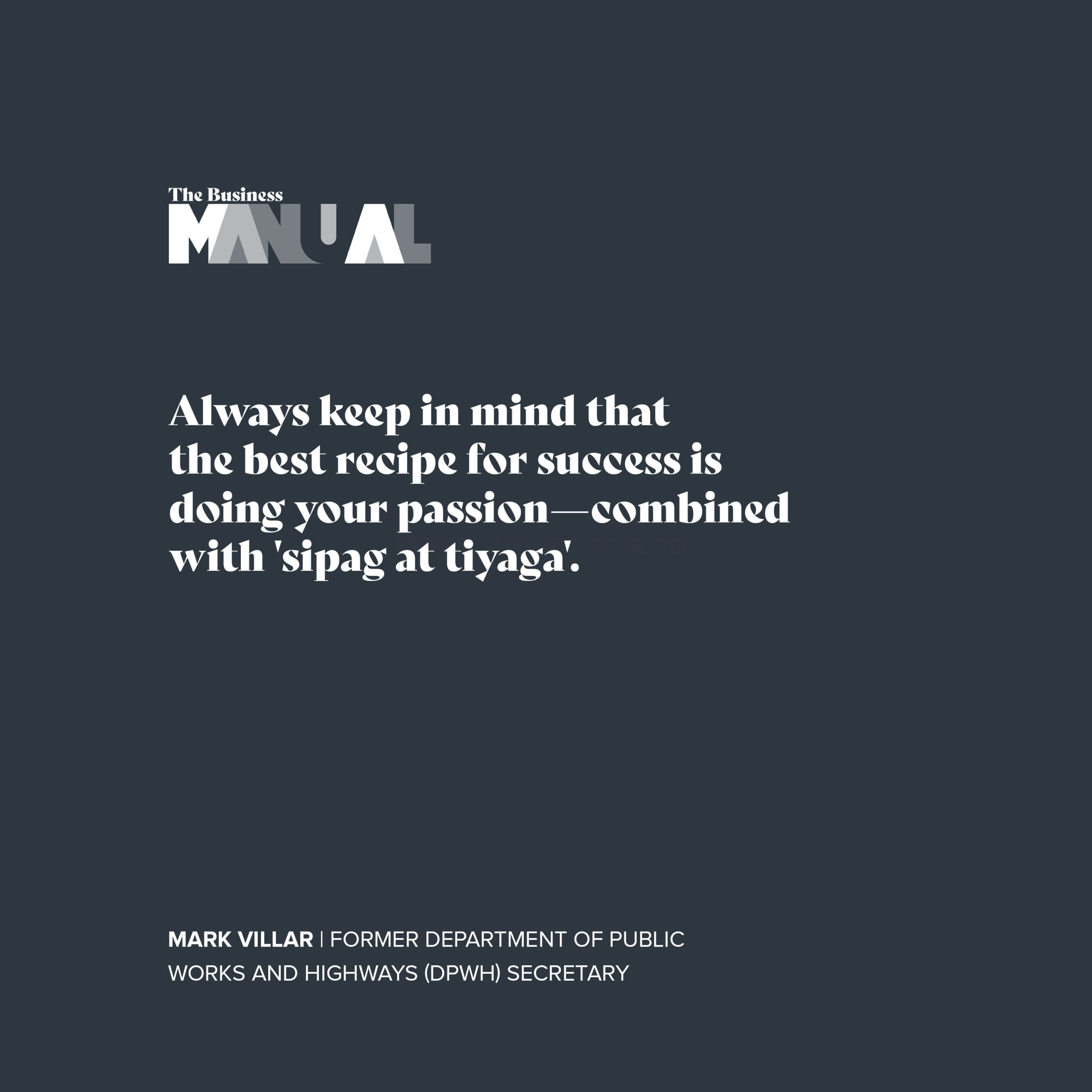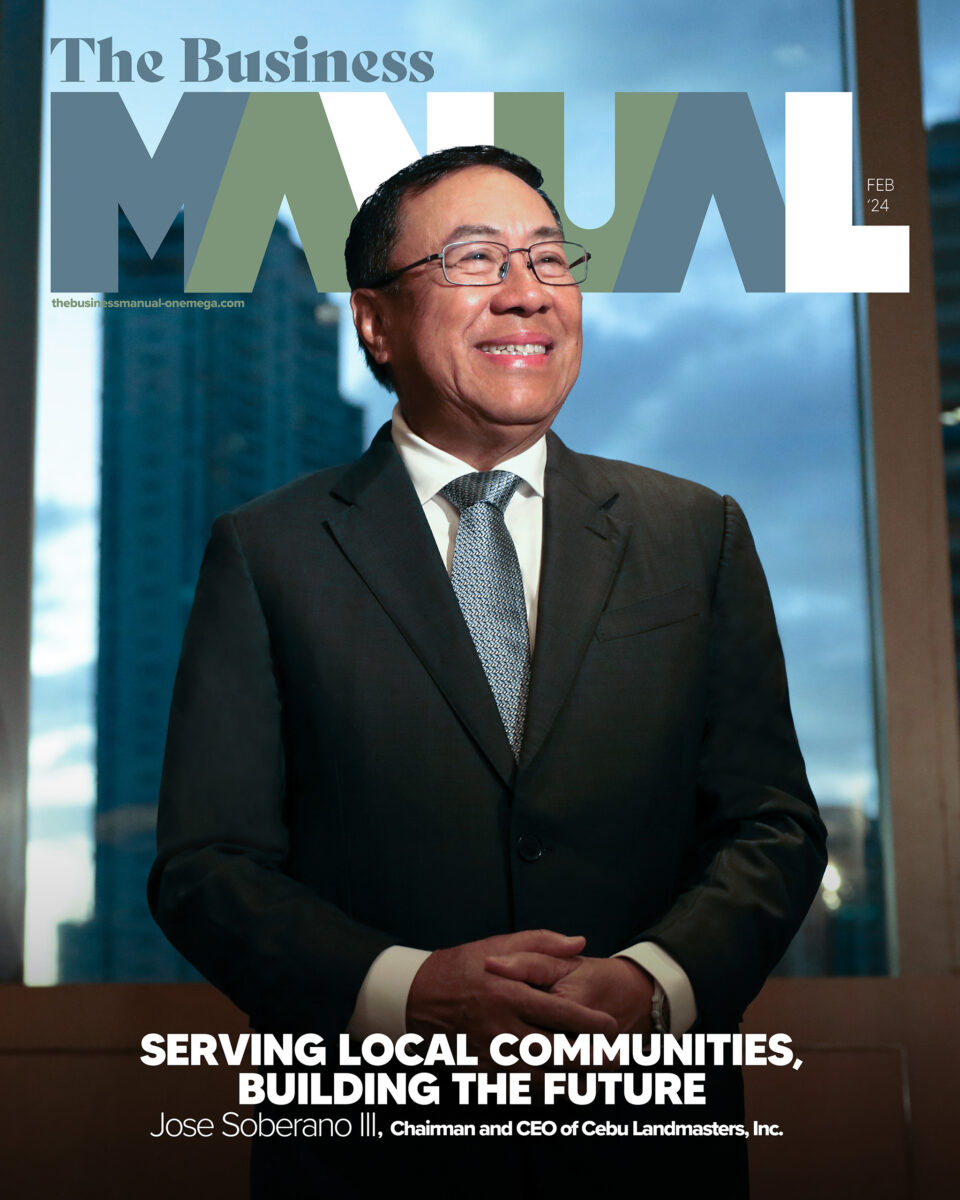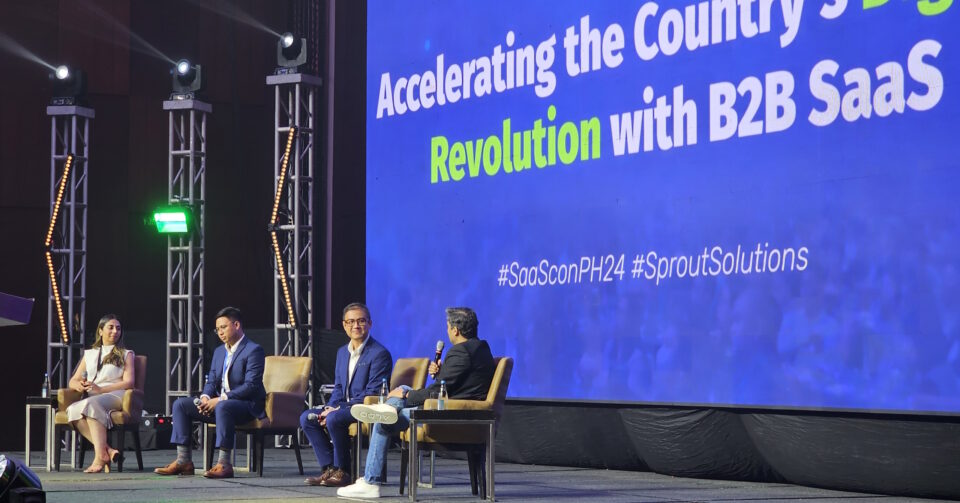Former DPWH Secretary Mark Villar on Resilience and Building Opportunities
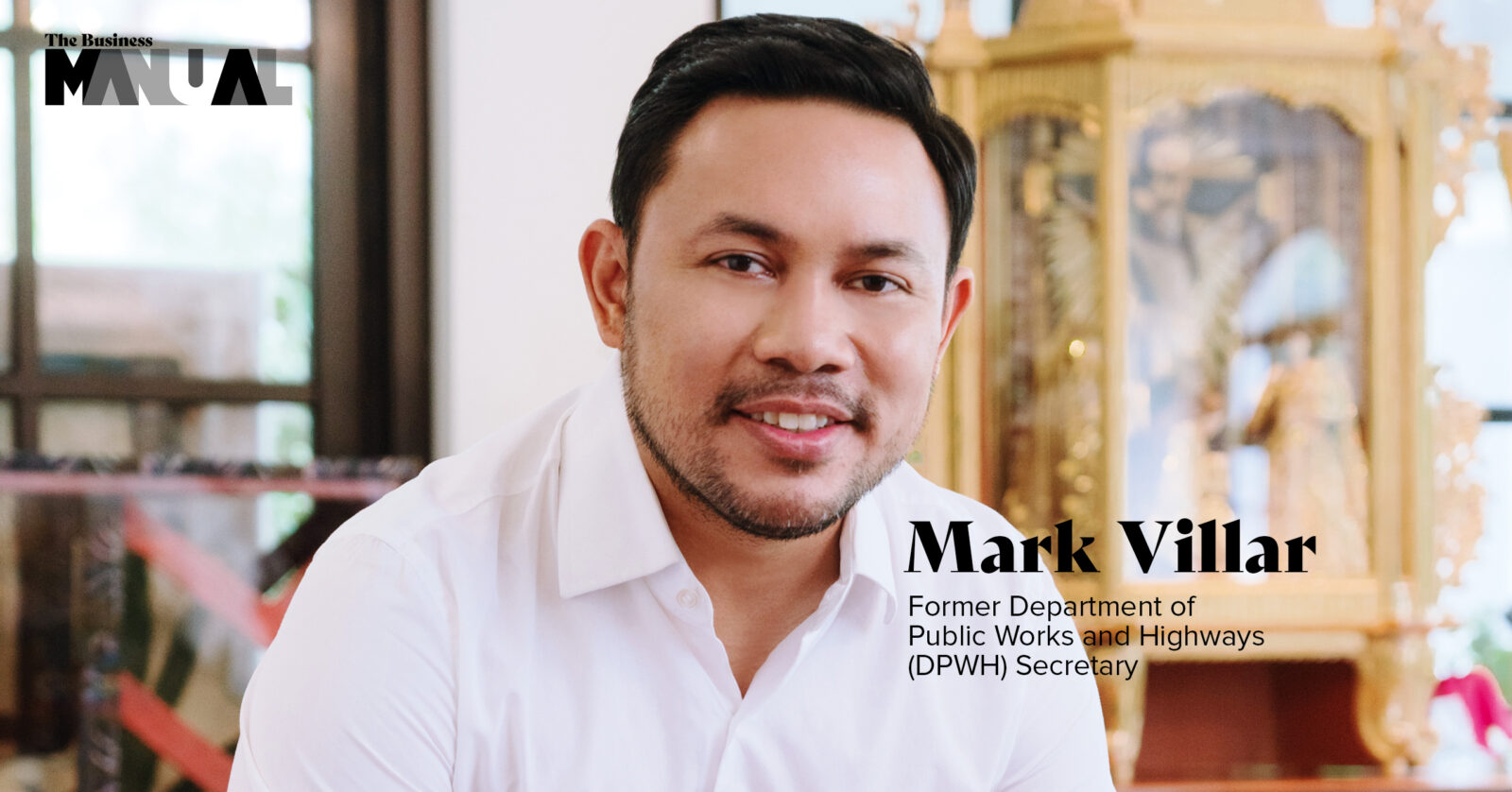
In a pandemic that threatens the very foundations of our country, former DPWH Secretary Mark Villar’s answer is to build, build, build.
Looking back after almost 2 years in quarantine, it’s clear that the ongoing COVID-19 pandemic has taken the whole world by storm. Starting off with a country-wide lockdown that kept everyone at home, followed by ever-changing quarantine restrictions, this limbo has affected everyone—both in their business and personal lives.
Despite the country-wide standstill, life must go on, most especially in the political landscape. With a worldwide crisis that threatens to shake the very core of the country, we need our government now, more than ever. Although a tricky path to navigate—one riddled with challenges, diplomacy, bureaucracy, scandal, and more—the stronger ones persevere against all odds.
One example of this is former Department of Public Works and Highways (DPWH) Secretary Mark Villar.
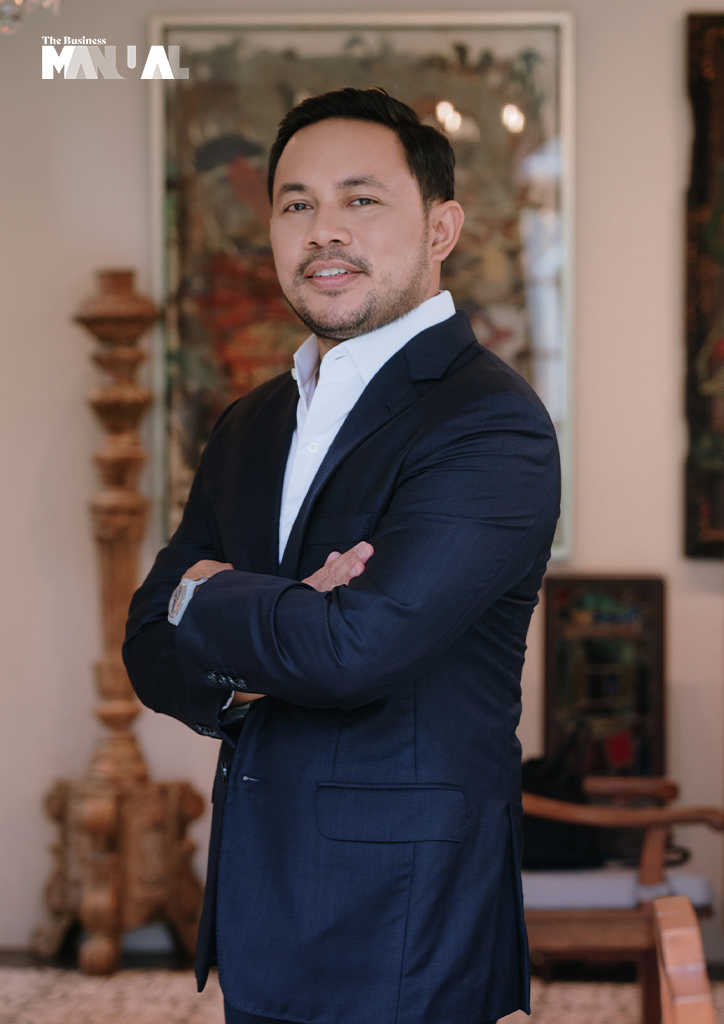
From Business to Politics
Just who is Mark Villar? Many know him by his parents—his father, former Senate President Manny Villar, and his mother, Senator Cynthia Villar. But Mark Villar himself has his share of achievements during his term as the DPWH secretary.
And that is definitely nothing to be sneezed at.
Contrary to what most may think, Mark Villar did not immediately get into politics just yet, despite being born to a family of politicians. In fact, before he became the person he is today, his roots go back to impressive education credentials, as he graduated from the University of Pennsylvania with a degree in Political Science, Philosophy, and Economics. He followed this soon after with an MBA at the University of Chicago Booth School of Business and started his career as a General Manager in Crown Asia.
His foray into politics soon took flight in 2010, when he ran and was elected as the Congressman in Las Pinas City—which he attributes to luck. And as they say, the rest is history.
Build, Build, Build
“Build, build, build” is a mantra that is associated with both the Duterte administration and the DPWH. Following his term as Congressman, Mark soon took on the job as the secretary for the DPWH, where he would soon be in charge of the many infrastructures that will run in the Philippines.
Roads, however, don’t just build themselves. During his 4-year term, Mark shares that he generated over 6.5 million jobs from the program. “Throughout my years in [the] DPWH, I was able to institute numerous reforms which have led to the completion, rehabilitation, and improvement of quality infrastructure all over the Philippines. [And this has] continuously benefitted the Filipino people,” Mark explains.
He goes on to add that, “we worked very hard to ensure [that] history remembers the last five years as the Philippines’ ‘Golden Age of Infrastructure.'”
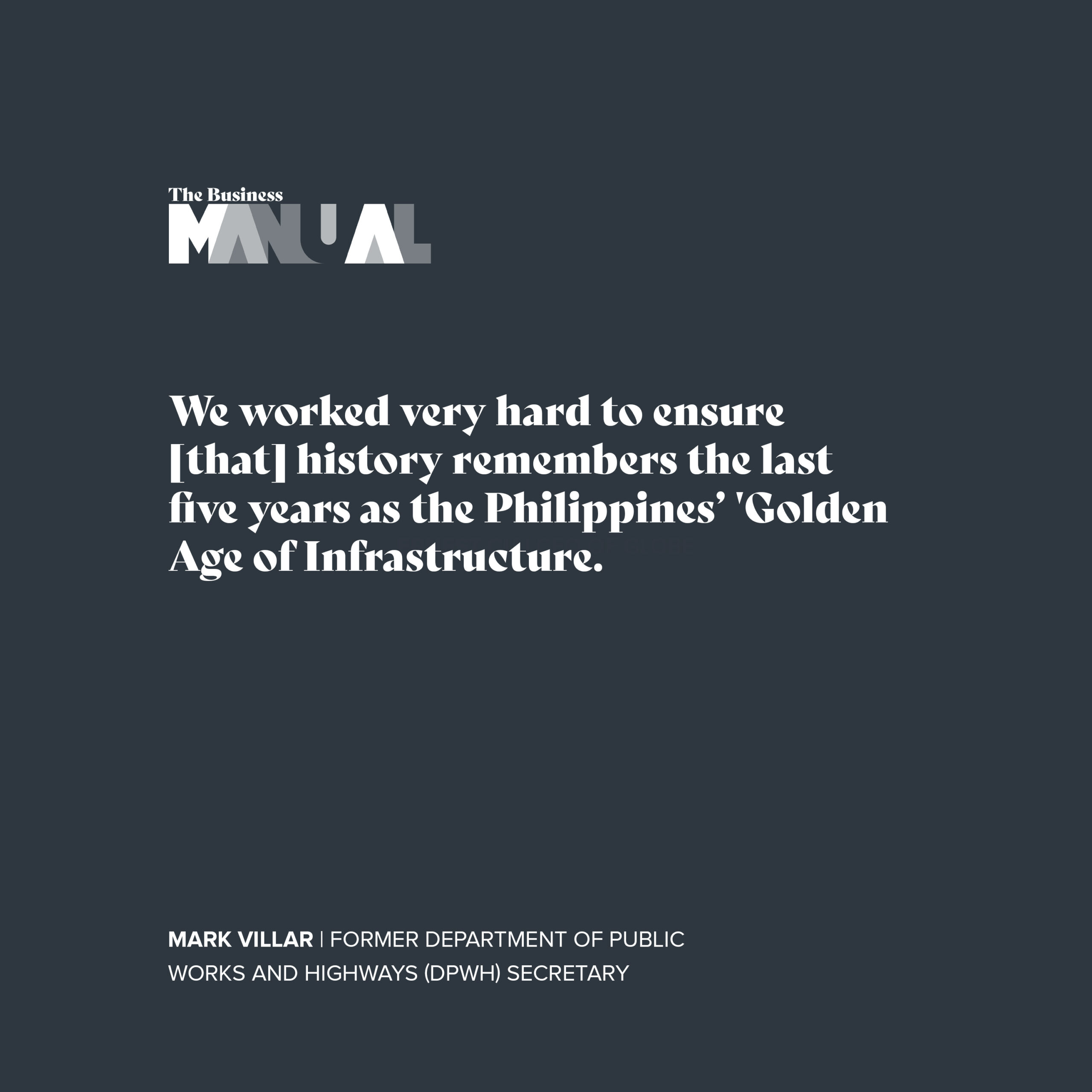
Reforms and Doing Things Right in DPWH
During one’s first years in the position, there are two paths ahead: one is to continue what the predecessor has left off, while another option is to implement your own plans. In Mark’s case, he chose Change. “My first priority was to institute reforms. The problem of ‘right of way’ has hounded many infrastructure projects for decades. To resolve this, one of my first administrative orders was about the creation of Right-of-Way (ROW) Task Force for each of the projects being implemented.”
The Philippines is no stranger to construction delays. With half-done bridges, potholes, and partially-cemented roads, many projects have been abandoned for a number of reasons, like a change in office or lack of funds. But with ROW, Mark aims to minimize delays and likewise monitor all road, bridge, and flood control projects nationwide under their jurisdiction.
“Through such reforms, we were able to meet our targets,” he explains. “The 5.58-km expressway connecting MacArthur Highway and C3 Road was completed on April 19. Travel time from Valenzuela City to C3 Caloocan City was reduced from more than an hour to only five minutes, benefitting some 20,000 motorists every day.”
Being driven and committed to his job meant constantly monitoring ongoing projects, too. And this meant paying close attention to the many contractors and companies who bid for the DPWH projects. “We used a technology called the Infra-Track App, which has a built-in geotagging feature that plots photos inputted in the system for monitoring the exact geographic coordinates where they were taken. The system automatically alerts us in the DPWH when a project is misreported from a different location,” he adds.
“That’s one way of ensuring we have no ghost projects in the DPWH,” he says, elaborating that after its implementation, he has already blacklisted 25 delinquent contractors since 2018.
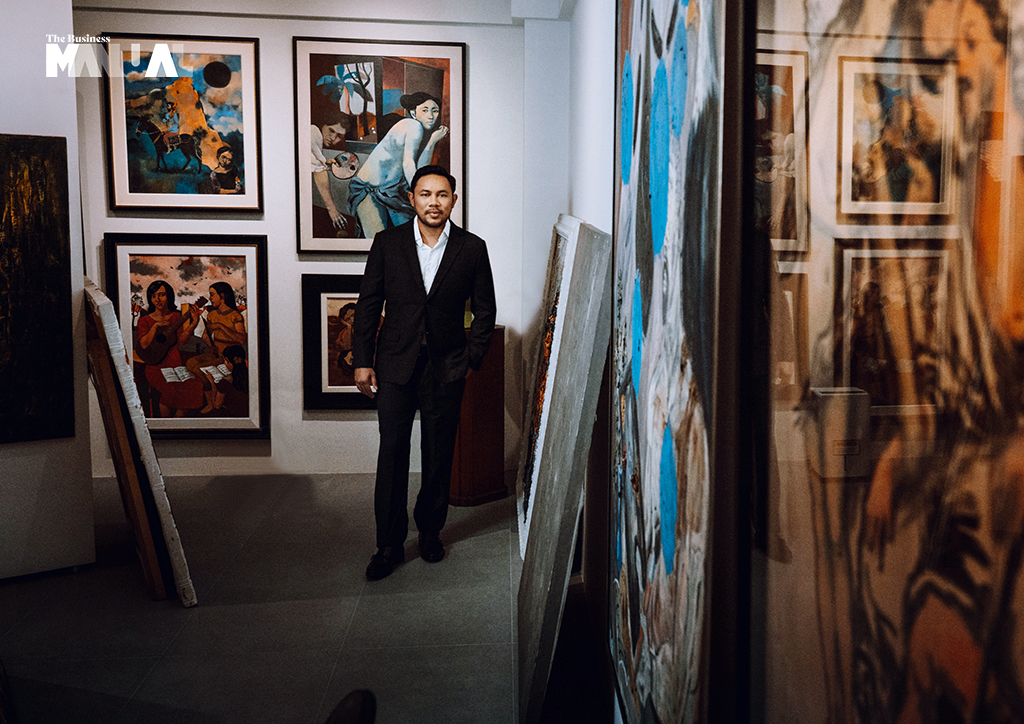
On Smooth Sailing Roads and Roadblocks
With a 4-year tenure, it’s safe to say that Mark has achieved many things for the country’s infrastructure—both in construction rate and expenditures. “Infrastructure spending has increased two-fold compared to the past six administrations. On average, infrastructure spending from 2016 to 2019 was at 4.9 percent of the country’s Gross Domestic Product (GDP)—more than double the 2.4 percent average infrastructure spending in the last fifty years.”
He goes on to add that with that, he has completed a total of 29,264 kilometers of roads, 5,950 bridges, 11,340 flood control projects, 222 evacuation centers, 133 Tatag ng Imprastraktura Para sa Kapayapaan at Seguridad (TIKAS) projects, and 150,149 classrooms—all with the help of 6.5 million Filipino workers. What’s more, a total of 3,122.73 kilometers were maintained, 4,686 kilometers widened and 3,591.96 kilometers were rehabilitated and upgraded.
These numbers, while astronomical, do not come easy—especially when barred by obstacles like the ongoing pandemic. While facing setbacks like everyone else, which include many offices closing in the first few months of lockdown and the delays in many projects, Mark says that they’ve done their best in remaining productive.
And that, of course, included changing their priorities to a more pandemic-ready one. “We have completed a number of flagship infrastructure projects despite the lockdown, while also completing 739 We Heal As One Centers that are already operational,” he shares. “These centers are either mega community quarantine facilities, isolation facilities, off-site dormitories, or modular hospitals with a total of 27,302-bed capacities.”
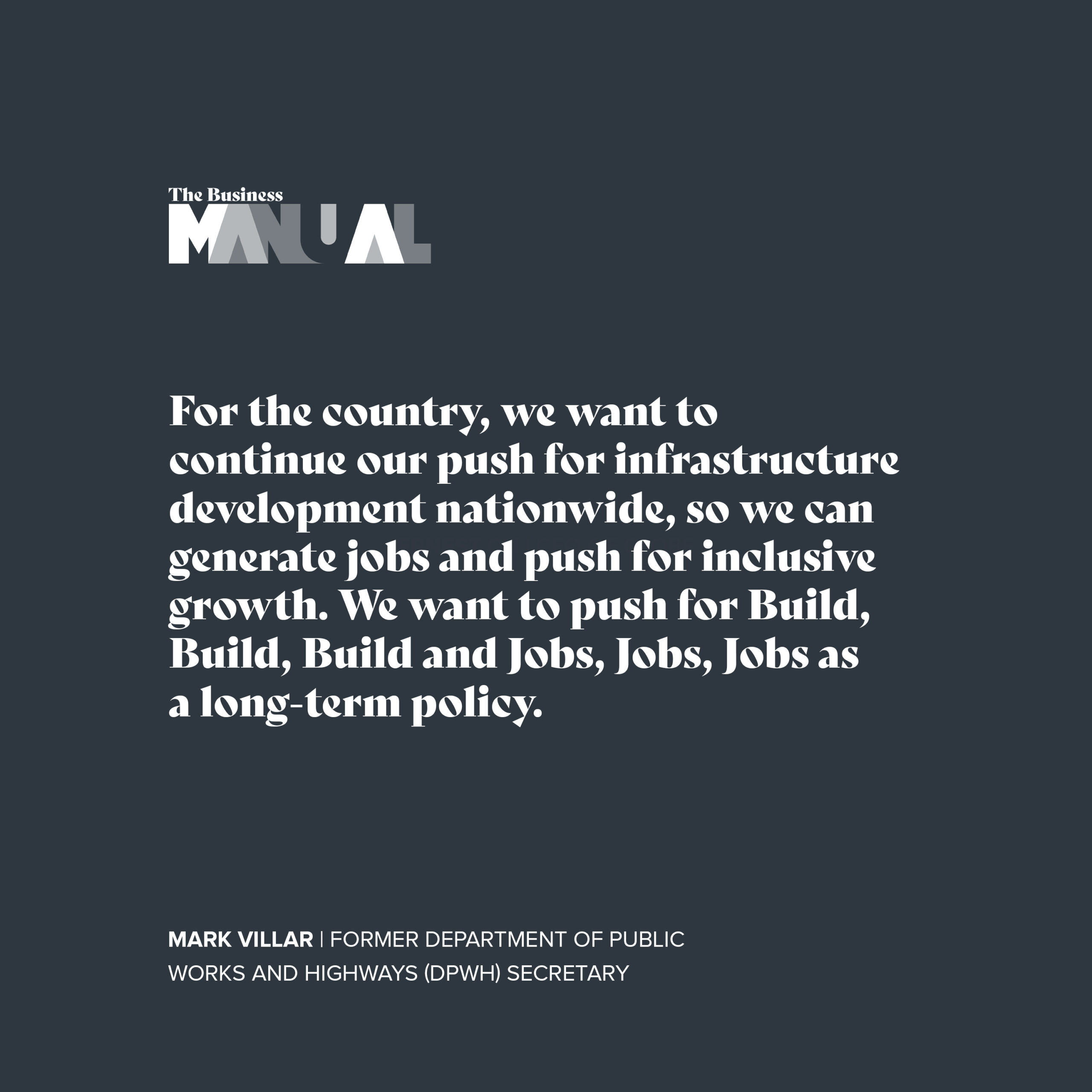
The Secret to Success
No man is an island, let alone an archipelago, and Mark knows that for a fact. His successes in the DPWH, while started under his leadership, could not have been done without the help and support of his countrymen. “It was important for us [to] complete Build, Build Build projects in the fastest timetable possible and pump prime the economy in the midst of the health crisis… which would not have been possible without the skill, work, and sacrifices of 6.5 million Filipino workers,” he explains.
Likewise, an important figure stands behind his success: his wife Emmeline Yan Aglipay, or Emi, for short. “Behind a successful man is a strong woman,” he shares fondly. “I’m so proud of my wife for the strength and courage she shows in her battle against lupus. She’s an inspiration for me and the many others who are also affected by this condition. My wife and my daughter Emma have always been my source of strength.”
On that topic, while building for success is an arduous job, Mark also stresses the importance of a good work-life balance. In fact, it’s the time he spends with family off-work that gives him the energy to work hard in his job. “[My] family is my main detox. My off-days have always been reserved for my family. Our family loves going on trips. I look forward to smoking briskets for them.”
Future Plans and Dreams
While his term as the DPWH has drawn to a close, Mark still has the country’s best interest in mind. “For [the] business, my dad and brother are the ones taking care of it. [As] for the country, we want to continue our push for infrastructure development nationwide, so we can generate jobs and push for inclusive growth. We want to push for [programs like] Build, Build, Build and Jobs, Jobs, Jobs as a long-term policy.”
With vaccines being made available, there may be light at the end of this long and dark tunnel. Keeping a hopeful outlook, Mark has one thing to say to his fellow Filipinos and to the youth. “I am confident that there is no virus that can destroy the Filipino spirit and resiliency. May your hunger to learn more continue to lead you to greater heights.”
“Always keep in mind that the best recipe for success is doing your passion—combined with ‘sipag at tiyaga‘,” he ends.
